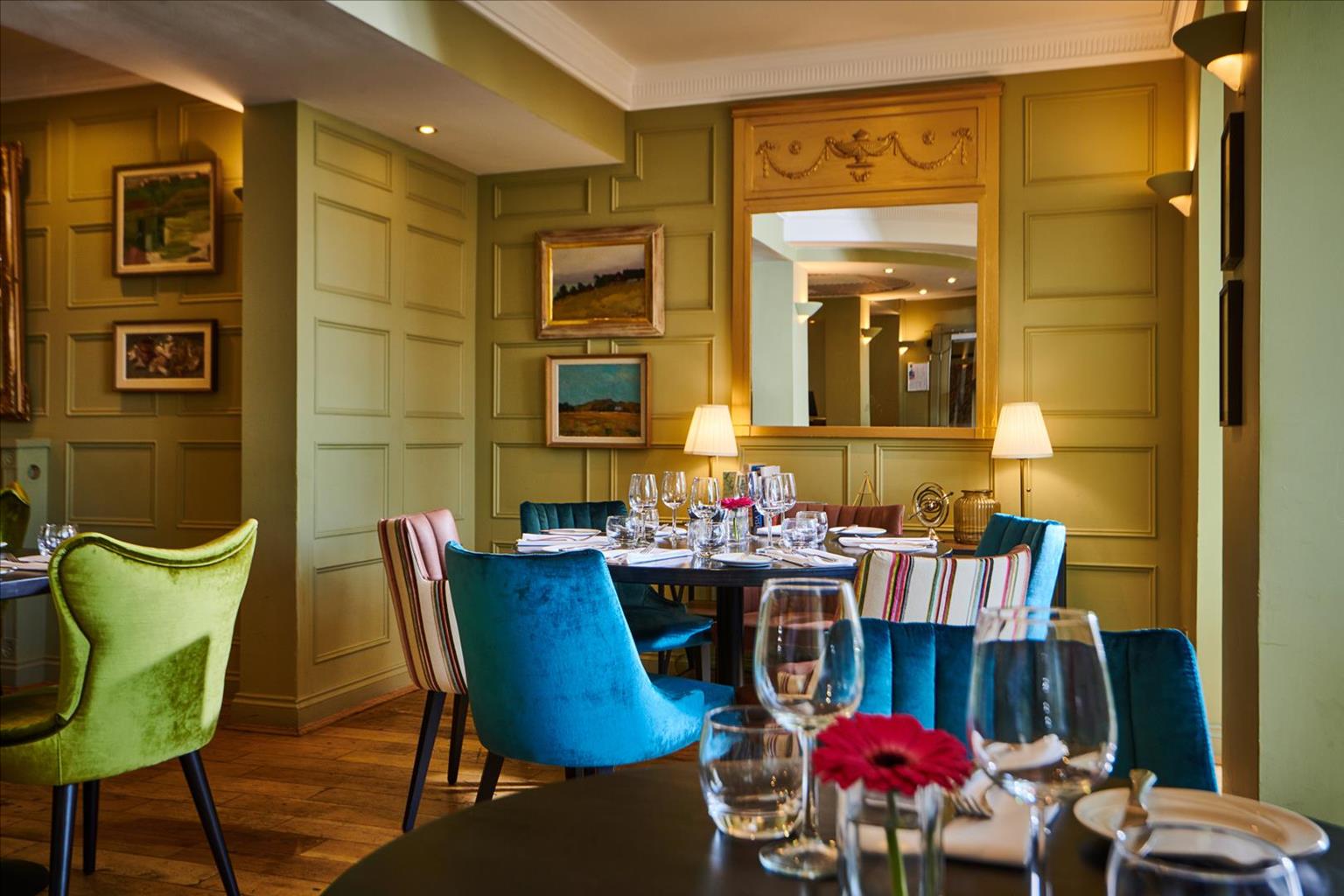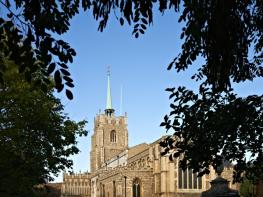Centrally located for exploring the historic town of Maldon and surrounding areas, this…
From Maldon to Heybridge

Combine historic Maldon, home of salt making, with a network of fascinating waterways.
4.25 miles (6.8kms)
About the walk
Top television chefs swear by the healthy attributes of sea salt, and keen cooks will notice that they often refer to Maldon Sea Salt in their culinary creations. On this walk you'll not only discover picturesque pathways, historic buildings and estuarine bird life, but also pass the factory which has been the home of salt manufacturing since 1882.
A victorious battle
Salt aside, it's hard to imagine that the rural riverside town of Maldon, perched on a hill above the River Chelmer, was once the scene of a bloody battle. But one morning, back in AD 991, the Saxon inhabitants awoke to witness 93 Viking longboats sailing up the estuary of the River Blackwater. The invaders, hell-bent on death, destruction and victory, were forced to camp at Northey Island, as the receding tide left their ships stranded. Word had spread that Sandwich and Ipswich had been plundered, and under the leadership of Byrhtnoth, Maldon's leader, a two-day battle on the marshes opposite Northey Island ended in a Saxon victory. Byrhtnoth, however, died on the battlefield, his head carried off as a trophy.
Between the 17th and early 19th centuries Maldon thrived as a port town and centre of admiralty jurisdiction due to its position at the head of the Blackwater Estuary. In 1797 the Chelmer and Blackwater Navigation linked the town with Chelmsford. Although Maldon lost out on port dues and maritime trade declined, the town retained its prominence, with the oyster industry and barge trade. It was second in importance only to Colchester, and had already established its own abbey, grammar school and Moot Hall (which later served as a police station), a court and a gaol house.
Thanks to the popularity of saltwater bathing in the 18th century and the growing barge trade from London, Maldon flourished. By 1847 the town was linked to London by rail, and a promenade park attracted wealthy citizens. Ships still come up on the tide bringing grain from Holland to the flour mill on the banks of the River Chelmer, and you can also see the traditional Thames sailing barges, identified by their red sails.
Many are now given over to pleasure sailing, but in days gone by they plied their trade along the east coast to London. Today this smart town, with its narrow streets and attractive timber-framed buildings, many with 18th- and 19th-century facades, welcomes the boating fraternity. Landlubbers, more interested in Maldon's social history rather than messing about in boats, can explore the pathways along the River Chelmer or the tow paths of the Chelmer and Blackwater Navigation, which meet in a complex of waterways at Beeleigh Falls.
Walk directions
From the car park turn left and walk along Downs Road. Where the road curves right, bear left at a public footpath sign, downhill. Where the road curves right at the riverside turn left, cross Fullbridge with care, and follow the grassy embankment keeping the river on your right. Go up steps and turn right along a lane. Maintain direction and cross a stile. Follow the often muddy path, which meanders uphill through the sloping meadow usually occupied by horses.
Go through a kissing gate and over the adjacent stile and keep ahead, looking out for a stile on the right at the top of the hill. Turn right, along the downhill path through woodland and pass under the A414 Maldon bypass. Continue along the rising concrete path, and at the end bear right.
Maintain direction along this canopied green lane bounded by ancient hedgerows, and cross a footbridge. Follow the yellow waymark along the grassy path, to join the gravel path.
On your right is Beeleigh Abbey. Continue past the abbey and at the end turn right onto a lane. Ignore the footpath on the left and pass Beeleigh Grange Farm on your left, and Beeleigh Falls House, an impressive Victorian villa, on the right. Go through the kissing gate and soon you hear the sound of rushing water of Beeleigh Falls.
Cross the timber bridge over the weir. At the end of the bridge turn right, keeping the river on your right. Stop at the second weir for good river views. Continue, keeping the river on your right, and at Beeleigh Lock turn right and walk, with the canal on your left, towards the red-brick bridge. Do not cross the bridge, instead turn right onto the concrete path next to the canal. Maintain direction with the canal on your left and the golf course on your right. Cross the next bridge and turn right, keeping the canal on your right. Continue under two sections of the Maldon bypass and keep ahead onto the grassy bridleway running parallel with the canal.
At the next bridge take the set of steps up to Heybridge Street. At the top turn right and join the B1018 towards Maldon. Maintain direction to cross the River Chelmer via Fullbridge, bear left into Market Hill, turn left into the High Street and return to the car park via Butt Lane on your left.
Additional information
Mainly grassy paths, narrow in parts and prone to mud after rain, some roads
River estuary, some woodland, canal tow path, marshland and mudflats, some urban streets
Lots of water but dogs shouldn't take a dip, they could get stuck in mud. Watch out for Shetland ponies, too
OS Explorer 183 Chelmsford & The Rodings, Maldon & Witham
Pay-and-display car park at Butt Lane
Butt Lane
WALKING IN SAFETY
Read our tips to look after yourself and the environment when following this walk.
Find out more
Also in the area
About the area
Discover Essex
Essex is full of pleasant surprises. It has the largest coastline of any county in England, with its fair share of castles, royal connections and scenic valleys. Take Colchester, for example, which was built by the Romans and is Britain’s oldest recorded town. Its castle contains the country’s largest Norman keep and yet, a stone’s throw from here, East Anglia’s newest arts centre promises to put Colchester firmly on the map as Essex’s capital of culture.
Tidal estuaries are plentiful and their mudflats offer migrating birds a winter feeding place. Essex was known as the land of the East Saxons and for centuries people from all over Europe settled here, each wave leaving its own distinctive cultural and social mark on the landscape. Walking a little off the beaten track will lead you to the rural retreats of deepest Essex, while all over the county there are ancient monuments to explore:
- the great Waltham Abbey
- Greensted, thought to be the oldest wooden church in the world
- the delightful village of Pleshey has one of the finest examples of a former motte-and-bailey castle
- Hedingham Castle, magnificently preserved and dating from the 11th century.
Nearby stays
Restaurants and Pubs
Nearby experiences
Recommended things to do
Why choose Rated Trips?
Your trusted guide to rated places across the UK
The best coverage
Discover more than 15,000 professionally rated places to stay, eat and visit from across the UK and Ireland.
Quality assured
Choose a place to stay safe in the knowledge that it has been expertly assessed by trained assessors.
Plan your next trip
Search by location or the type of place you're visiting to find your next ideal holiday experience.
Travel inspiration
Read our articles, city guides and recommended things to do for inspiration. We're here to help you explore the UK.


















